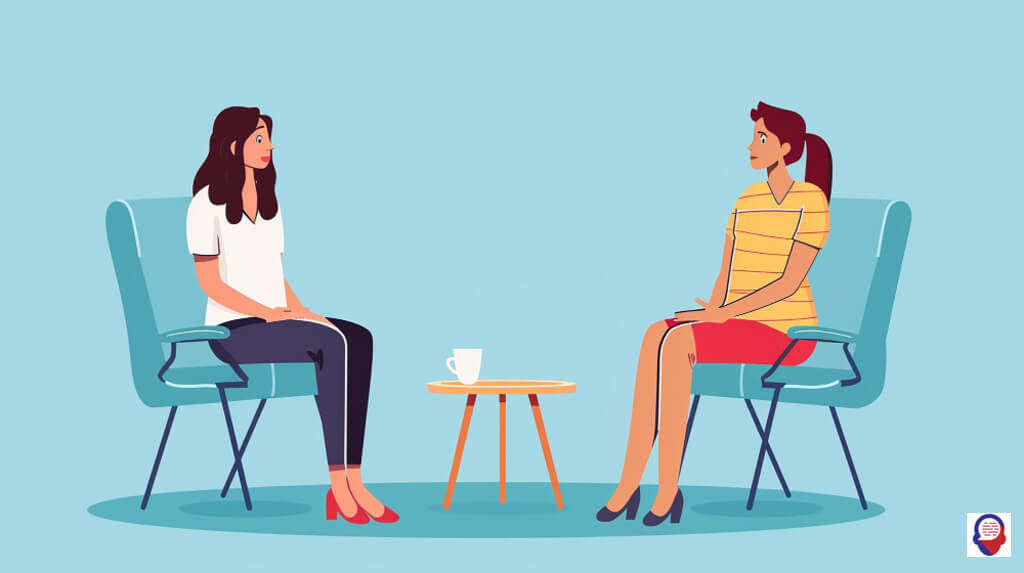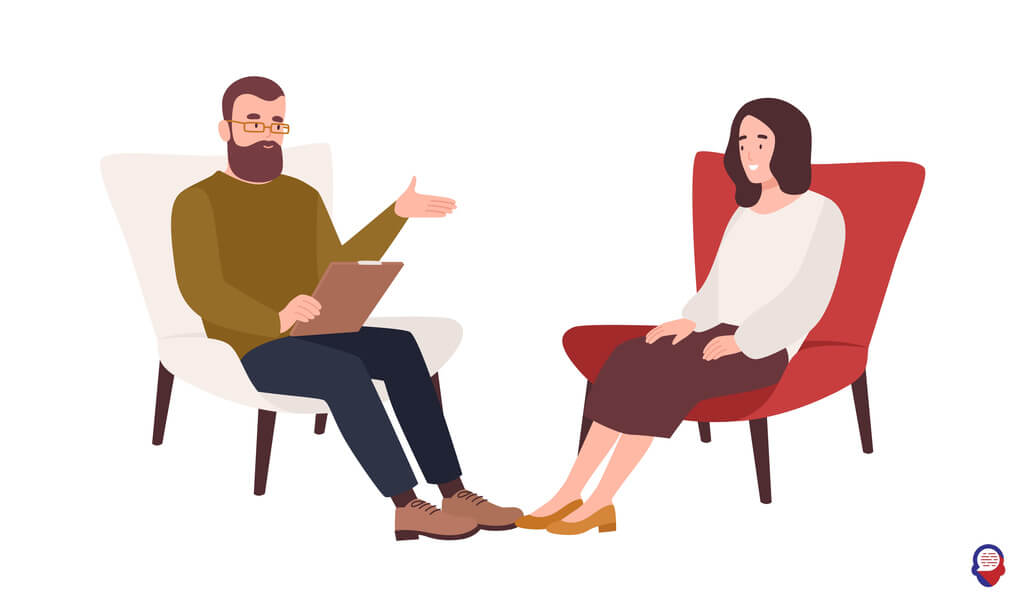Can Therapy Help You Navigate Psychotic Experiences?
When your mind begins to play tricks on you, the world can feel like a confusing and terrifying place. The experience of psychosis, where reality becomes distorted, is deeply personal and often isolating. For decades, the primary treatment was medication, but a powerful psychological approach has emerged, offering hope, understanding, and a new way to manage these profound challenges. This approach is a specialized form of Cognitive Behavioural Therapy, known as CBT for psychosis, or CBTp. It’s a collaborative journey that doesn’t seek to erase your experiences, but to change your relationship with them, reducing their power and helping you reclaim your life.
This article will explore the intricate world of CBTp. We will journey through what psychosis truly is, how CBT works its magic on the mind, and how these two concepts merge to create a supportive, evidence-based therapy. It’s about more than just coping, it’s about understanding, empowering yourself, and finding a stable path forward, even when your perceptions feel anything but stable.

What exactly is psychosis?
Psychosis is a mental health condition where a person’s perceptions and thoughts are disrupted, making it difficult for them to distinguish what is real from what is not. It is not a specific illness itself, but rather a set of symptoms that can be part of various conditions, such as schizophrenia, bipolar disorder, or severe depression. It can also be triggered by trauma, stress, substance use, or physical illness.
The experience is profoundly disorienting. Imagine your senses, the very tools you use to understand the world, start providing you with false information. This is the reality for someone in a psychotic episode. Their mind creates perceptions and beliefs that feel completely authentic, even when they contradict the shared reality of those around them.

What are the main symptoms of psychosis?
The symptoms of psychosis are generally categorized into two main types, often referred to as "positive" symptoms, which are experiences that are added to reality. The most commonly known are hallucinations and delusions. These experiences can be incredibly vivid and convincing to the person having them.
Hallucinations involve sensing things that are not actually there. While auditory hallucinations, like hearing voices, are the most common, a person might also see, feel, smell, or taste things that others cannot. These sensory experiences are not imaginary, they are real neurological events for the individual.
Delusions are strong, fixed beliefs that are not based in reality and are resistant to contrary evidence. A person might believe they are being followed, that they have special powers, or that external forces are controlling their thoughts. These beliefs are not simply opinions, they are deeply held convictions that shape the person’s understanding of their world and their place within it.

How does psychosis affect daily life?
Living with psychosis can be incredibly challenging, impacting nearly every aspect of a person’s life. The distress caused by hallucinations and the confusion stemming from delusional beliefs can make it difficult to concentrate, maintain relationships, and hold down a job or attend school. The world can feel threatening and unpredictable.
Furthermore, a person experiencing psychosis might also exhibit disorganized thinking and speech, where their thoughts become jumbled and their sentences are difficult to follow. They may also experience what are known as "negative" symptoms, which involve a reduction or loss of normal functions. This can include a lack of motivation, emotional flatness, social withdrawal, and a diminished ability to experience pleasure, making engagement with life feel like an insurmountable effort.

What is Cognitive Behavioural Therapy?
Cognitive Behavioural Therapy, or CBT, is a structured, goal-oriented form of psychotherapy that helps people identify and change destructive or disturbing thought patterns and behaviours. The core principle of CBT is that our thoughts, feelings, physical sensations, and actions are all interconnected. It proposes that our thoughts about a situation, not the situation itself, are what primarily determine how we feel and behave.
Think of it as learning the language of your own mind. CBT provides you with the tools to become an observer of your internal world. By understanding the links between a triggering event, your interpretation of that event (your thoughts), the emotions that follow, and your subsequent actions, you can begin to intervene at critical points in this cycle. It’s a practical, hands-on approach focused on solving problems in the here and now.

What is the basic model of CBT?
The basic model of CBT operates on a simple but powerful framework, often visualized as a cycle. An event happens, which triggers a thought or belief. This thought then leads to an emotional response and a physical sensation, which in turn influences your behaviour. These behaviours can then reinforce the original thought, strengthening the cycle.
For instance, if you make a mistake at work (the event), you might think, "I’m a complete failure" (the thought). This thought could lead to feelings of shame and anxiety (emotions), a knot in your stomach (physical sensation), and cause you to avoid similar tasks in the future (behaviour). This avoidance then reinforces the belief that you are incapable, making the cycle more likely to repeat. CBT works by helping you challenge that initial thought, "I’m a complete failure," and replace it with a more balanced and realistic one.

How does a CBT session typically work?
A typical CBT session is a collaborative effort between you and your therapist. It’s not about passively listening to advice, it’s an active process. Sessions are usually structured, beginning with a check-in on your week and a review of any tasks you worked on between sessions.
You and your therapist will then set an agenda for the current session, deciding what specific problems or goals you want to focus on. The bulk of the session involves exploring the thoughts, feelings, and behaviours related to these problems. The therapist will use specific techniques, like guided questioning, to help you uncover your underlying beliefs and assumptions. The session often concludes with agreeing on a new "homework" assignment, which is a practical task designed to help you apply what you’ve learned in your daily life.

How does CBT for psychosis (CBTp) actually work?
CBT for psychosis, often called CBTp, is a specialized adaptation of standard CBT that is specifically designed to help individuals who experience symptoms like hallucinations and delusions. It operates on the same core principle, that it is the interpretation of an experience, not the experience itself, that causes the most distress. The goal is not necessarily to eliminate the voices or the unusual beliefs, but to help the person build a different relationship with them, reducing their emotional impact and influence.
This therapy is a gentle, curious, and non-confrontational exploration of the person’s unique reality. The therapist doesn’t tell the client their beliefs are wrong. Instead, they work together as a team of detectives, examining the evidence for and against certain beliefs, exploring alternative explanations, and developing strategies to cope with distressing sensory experiences. It’s a process of building resilience and personal understanding from the inside out.

What is the main goal of CBTp?
The primary goal of CBTp is to reduce the distress and disability associated with psychotic symptoms, thereby improving the individual’s overall quality of life. It aims to empower the person, helping them feel less controlled by their experiences and more in control of their reactions. The therapy seeks to lessen the fear, anxiety, and depression that often accompany psychosis.
Instead of trying to prove a delusion is false, the therapist might help the client explore how holding that belief affects their life. For example, if someone believes they are being monitored, how does that belief make them feel? What actions does it cause them to take? By focusing on the consequences of the belief, therapy can help the person find ways to live a more fulfilling life, even if the belief itself lingers.

How does a therapist build trust in CBTp?
Building a strong, trusting therapeutic alliance is the absolute cornerstone of effective CBTp. A person experiencing psychosis often feels misunderstood, isolated, and fearful. The therapist’s first and most important job is to create a safe, non-judgmental space where the client feels heard, respected, and validated.
This is achieved through genuine empathy, active listening, and an approach of unconditional positive regard. The therapist accepts the client’s reality as their subjective truth without question. They might say things like, "That sounds incredibly frightening," or "It makes sense that you would feel that way, given what you’re experiencing." This validation is crucial, as it lowers the client’s defences and opens the door for a collaborative exploration of their experiences, rather than a debate over what is real.

How does CBTp help with distressing beliefs or delusions?
CBTp addresses delusions not by directly challenging them, but by gently and collaboratively exploring them. The therapist helps the client to think like a scientist about their own beliefs. This process involves examining the evidence that supports the belief, but also, crucially, looking for any evidence that might not fit.
The therapist uses a technique called Socratic questioning, asking open-ended questions to stimulate critical thinking. They might ask, "What first led you to believe this was happening?" or "Has there ever been a time when you expected something to happen based on this belief, and it didn’t?" The aim is to introduce doubt and cognitive flexibility, helping the client to consider alternative explanations for their experiences without feeling attacked or invalidated. This process helps to loosen the grip of the belief and reduce the conviction with which it is held.

What is reality testing in CBTp?
Reality testing is a collaborative behavioural experiment used in CBTp to help a client gather new information about their beliefs. It is never forced on the client, but rather developed together as a way to test a specific prediction that stems from a delusional belief. The goal is to move the discussion from the abstract world of belief to the concrete world of action and observation.
For example, if a person believes that everyone on the bus is talking about them, a reality testing experiment might involve them paying close attention on their next bus ride to see if they can find any evidence that contradicts this belief. They might be asked to observe how many people are on their phones, listening to music, or talking to the person next to them. This process can provide powerful, direct evidence that helps to modify the belief system over time.

How does CBTp help with hearing voices or hallucinations?
When addressing hallucinations like hearing voices, CBTp focuses on changing the person’s relationship with the voices. The therapy helps the individual understand the meaning they have attributed to the voices. For example, does the person believe the voices are powerful, all-knowing, or malevolent? These beliefs are what often drive the distress.
The therapist and client work together to develop coping strategies. This can include simple distraction techniques, like listening to music or engaging in a hobby. It can also involve more advanced methods, such as setting specific times to listen to the voices, or practicing assertiveness by talking back to them and challenging their content. The therapy helps the person see the voices as a manageable psychological event, rather than an uncontrollable external force.

What specific techniques are used in CBTp?
CBTp employs a range of techniques tailored to the individual’s specific needs and experiences. A central tool is the "ABC model," which helps the client map out the links between an Activating event (like hearing a voice), their Beliefs about the event (e.g., "This voice wants to harm me"), and the emotional and behavioural Consequences (fear and withdrawal).
Another key technique is normalising. The therapist provides information about how common unusual experiences can be in the general population, especially during times of stress. This helps to reduce the sense of shame and isolation the person might feel. Therapists also help clients develop a personal "biopsychosocial formulation," which is a collaborative story or map that explains how their life experiences, biology, and social situation may have led to their current difficulties. This formulation provides a coherent and non-blaming explanation for their psychosis.

Is CBTp a replacement for medication?
No, CBTp is not typically considered a replacement for antipsychotic medication, but rather a powerful and effective complementary treatment. For most people experiencing psychosis, a combination of medication and psychological therapy offers the best chance for recovery and long-term stability. Medication can be highly effective at reducing the intensity of symptoms like hallucinations and delusions, making the person more receptive to engaging in therapy.
Think of it this way, medication can help to turn down the "volume" of the psychotic symptoms, creating the mental space and clarity needed for the individual to do the deeper work of therapy. CBTp then provides the skills and understanding to manage the remaining symptoms, challenge distressing beliefs, and reduce the risk of future relapse. In some cases, for individuals who choose not to take medication or who have not responded well to it, CBTp can be offered as a primary intervention.

Why is a combination approach often recommended?
A combination approach is recommended because medication and CBTp target the problem from different angles, creating a more comprehensive and robust treatment plan. Antipsychotic medications work on a neurochemical level, helping to rebalance neurotransmitters in the brain, which can quickly reduce the severity of acute symptoms and provide crucial stability.
CBTp, on the other hand, works on a psychological level. It equips the individual with lifelong skills for understanding their mind, managing stress, and coping with their specific vulnerabilities. This psychological resilience is something medication alone cannot provide. By combining the two, you get both the immediate symptom relief from medication and the long-term empowerment and relapse prevention skills from therapy, leading to better outcomes and a higher quality of life.

What are the benefits of using CBT for psychosis?
The benefits of engaging in CBTp are significant and can be life-changing. One of the primary advantages is a marked reduction in the distress caused by psychotic symptoms. Even if the voices or beliefs don’t disappear entirely, they become less frightening and less powerful, allowing the person to re-engage with their life.
CBTp also fosters a profound sense of empowerment. By understanding the patterns of their own minds and learning practical coping skills, individuals move from feeling like passive victims of their symptoms to active agents in their own recovery. This can lead to increased self-esteem, hope for the future, and improved social and occupational functioning. Furthermore, research has shown that CBTp can reduce the rates of relapse and hospitalisation, providing long-term stability.

How can it improve overall well-being?
Beyond symptom management, CBTp can dramatically improve a person’s overall well-being. The therapy often addresses co-occurring issues like anxiety, depression, and trauma, which are very common in individuals who experience psychosis. By learning to manage negative thought patterns and emotional responses, people often report feeling calmer, happier, and more in control of their emotional lives.
The collaborative and validating nature of the therapy itself can be healing, helping to combat the profound isolation that often accompanies psychosis. Learning to build a trusting relationship with a therapist can be a model for improving relationships with family and friends. Ultimately, CBTp helps people to construct a more positive and meaningful life narrative, one that is not solely defined by their diagnosis.

Who is a good candidate for CBTp?
CBTp can be beneficial for a wide range of individuals who are experiencing or have experienced psychosis. It is suitable for people at various stages of their illness, including those who are experiencing their first episode, those with a long-standing diagnosis like schizophrenia, and even those considered to be at high risk of developing psychosis.
The most important factor for success is the person’s willingness to engage in the therapeutic process. While they do not need to have full insight or agree that their experiences are symptoms of an illness, they must have at least a small degree of curiosity and be willing to talk about their experiences and consider alternative perspectives. A desire to reduce their distress and improve their life is the key prerequisite.

Are there any situations where CBTp might not be suitable?
While CBTp is widely applicable, there are some situations where it may not be the most appropriate first-line approach. If a person is in the midst of a very acute and severe psychotic episode, where they are highly agitated, disorganized, or pose a risk to themselves or others, the immediate priority is medical stabilization. In such cases, medication and a safe hospital environment are necessary before psychological therapy can be effective.
Additionally, if an individual has absolutely no willingness to engage with a therapist or to even consider that their experiences are causing them problems, it can be very difficult to build the collaborative alliance necessary for CBTp. Therapy requires a partnership, and if one partner is entirely unwilling to participate, progress is unlikely. However, even in these cases, a skilled therapist may be able to use motivational techniques to foster engagement over time.

How can I find a therapist trained in CBTp?
Finding a therapist specifically trained and experienced in CBT for psychosis is crucial for effective treatment. You can start by speaking with your GP or psychiatrist, as they may be able to provide a referral through the NHS or recommend private practitioners in your area who specialize in this approach. Mental health charities and support organizations are also excellent resources for information and guidance.
When searching for a therapist privately, it is important to ask directly about their qualifications and experience in CBTp. You can inquire about their specific training, how many clients with psychosis they have worked with, and their general approach to therapy. A competent and confident therapist will be happy to answer these questions and help you feel comfortable before you commit to starting sessions.

What should I look for in a CBTp therapist?
When looking for a CBTp therapist, you should seek out someone who is not only professionally qualified but also possesses certain personal qualities. Look for a therapist who is warm, empathetic, and non-judgmental. You should feel that they are genuinely listening to you and trying to understand your world from your perspective.
A good CBTp therapist is patient, flexible, and creative. They understand that this is a slow and gentle process and will not push you faster than you are ready to go. They should inspire a sense of hope and collaboration, making you feel like you are a respected partner in your own recovery journey. Ultimately, the best therapist for you is someone you feel you can trust.
Frequently Asked Questions

How long does CBT for psychosis usually take?
The duration of CBTp can vary depending on the individual’s needs, the severity of their symptoms, and their personal goals. A typical course of therapy often involves between 16 and 24 sessions, usually held weekly, but this is a flexible guideline. Some people may benefit from a shorter intervention, while others with more complex or long-standing difficulties might engage in therapy for a year or longer. The process is collaborative, and the length of treatment is something you and your therapist would decide on together.

Can CBTp be conducted online?
Yes, CBTp can be effectively delivered online through video conferencing platforms. Research has shown that teletherapy can be just as effective as in-person sessions for many individuals, and it offers significant benefits in terms of accessibility and convenience. Online therapy can be an excellent option for people who live in remote areas, have mobility issues, or feel more comfortable engaging from their own home. It’s important to ensure you have a private, quiet space for your sessions and a stable internet connection.

What if I don’t believe my experiences are symptoms of an illness?
This is a very common and completely valid starting point for CBTp. A core principle of the therapy is to "meet the client where they are." You do not have to accept a diagnosis or believe your experiences are symptoms to benefit from the therapy. The focus is on your distress, not on labelling your experience. A good therapist will work with your belief system, helping you explore the impacts of your experiences on your life and find ways to cope with the fear, anxiety, or confusion they may be causing, regardless of what you believe their origin to be.

Is CBTp only for people with schizophrenia?
No, CBTp is not exclusively for people with a diagnosis of schizophrenia. Psychosis is a set of symptoms that can appear in a variety of conditions, including bipolar disorder, schizoaffective disorder, severe depression with psychotic features, and postpartum psychosis. The techniques and principles of CBTp can be adapted to help anyone who is troubled by experiences like hearing voices, paranoia, or unusual beliefs, regardless of their specific diagnosis.
Your experiences are valid, and you don’t have to navigate them alone. At Counselling-uk, we provide a safe, confidential, and professional place to explore your thoughts and find support. Reach out today to connect with a compassionate professional who can help you on your path to wellness.




